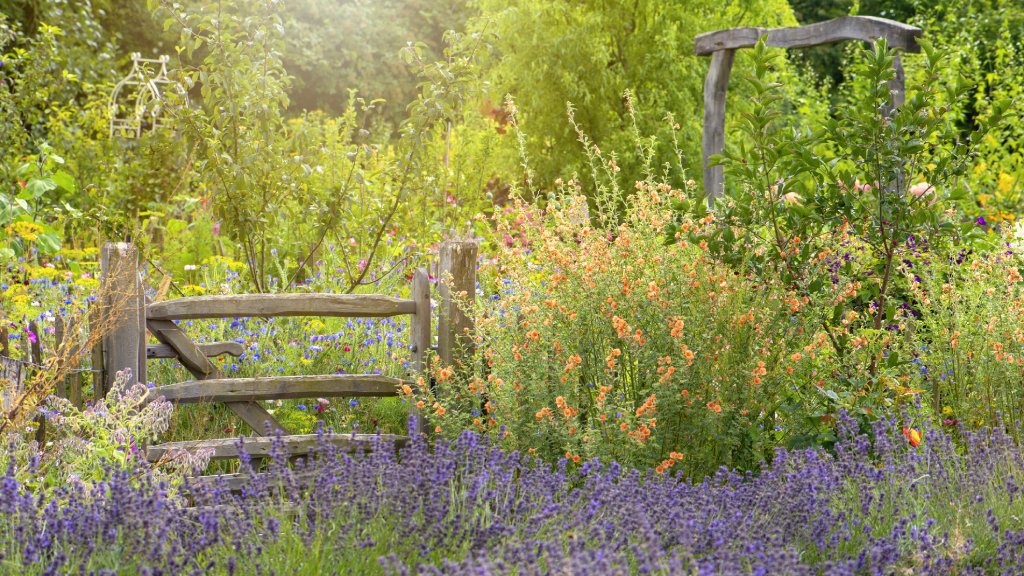9 Natural Landscaping Ideas For A Garden That Looks Like It’s Always Been There
Read about 9 natural landscaping ideas that will inspire you! Create and enjoy a natural garden and even a natural landscape design.


Natural landscape design is an art and a skill. It allows you to create a yard or garden that looks natural, unfussy, and relaxed. While a natural garden might look easy, it takes time, planning, and real skill to get it right. A lot of thought goes into these spaces that look like they just grew that way. Here are some natural landscaping ideas to get you started transforming your outdoor space.
Natural Landscaping Ideas
1. Grow Plants That Will Naturalize
Natural landscaping needs plants that grow organically and fill surrounding spaces. Clumps of neatly defined plants don’t look natural. Plants that naturalize grow and spread without your intervention. Some examples of naturalized plants include daylily, foxglove, and lily of the valley. Just be aware that some of these plants can be invasive and problematic.
2. Plant Perennials
Perennial gardens usually look more natural than those with annuals, which are often tropical plants that only survive summers in colder climates. Choose native perennials for the most natural look and arrange them organically with a mix of colors, textures, and sizes.
3. Convert to a Prairie Lawn
A conventional turf lawn is far from natural. Lawn alternatives, like prairies and meadows are increasingly popular for their sustainability and benefits to the local ecosystem. A prairie lawn should include natives like wild grasses and wildflowers. It supports native wildlife, including pollinators. Be sure to check with your homeowner’s association, if you have one, for any rules regarding lawns before beginning this major transformation.
4. Add a Natural Area
If you are unable to totally transform your turf lawn into a prairie, consider turning part of your garden into a natural area. Here are a few ideas:
- Convert just part of your turf lawn into a meadow or prairie with native grasses and flowers.
- Target a shady area to grow native mosses and shade-loving plants.
- Leave some corners of your garden “littered” with natural materials, like sticks, messy shrubs, and leaf litter to support wildlife.
5. Use Rocks to Mimic Nature
Choose rocks for the hardscaping in your natural landscape design. Medium and large rocks look more natural in the garden than paving stones, gravel paths, benches, and other similar elements used to create walls, paths, and seating areas. Choose rock landscaping for steps, borders, and edges to create more natural spaces in the garden.
6. Go Native
One of the best ways to create a more natural outdoor space is to choose native plants. Use trees, shrubs, and perennials native to your region to support wildlife and pollinators. They will grow more organically and naturally without your intervention. Native gardens require less water and are more likely to survive difficult conditions, like droughts, storms, or heatwaves.
Sign up for the Gardening Know How newsletter today and receive a free copy of our e-book "How to Grow Delicious Tomatoes".
7. Build a Natural Swimming Pool
A swimming pool is about as unnatural in the landscape as you can get. But if living without a swimming pool is a deal breaker, consider a natural option. Natural swimming pools look like ponds and like a real part of the landscape. They make use of plants in the water and around the edges of the pool to keep the water clean and to create a natural, native landscape.
8. Start a Stumpery
If you have had to remove any trees or lost trees to damage or storms, consider leaving the stumps in place. A stumpery is a garden that uses stumps as bases for growing plants and native ecosystems. Wildlife uses stumps for shelter and foraging, so by creating a garden in them, you are supporting a natural landscape.
9. Go Wild With Chaos Gardening
Chaos gardening may sound crazy, but it’s a growing design trend that has a lot of appeal. The idea is to let your garden mimic nature. Let plants grow where and how they want without so much interference from you, the gardener. This gives a more natural look and requires a lot less work on your part. To keep it from getting out of hand, your chaos garden will need some intervention, but much less than formal or traditional spaces.

Mary Ellen Ellis has been gardening for over 20 years. With degrees in Chemistry and Biology, Mary Ellen's specialties are flowers, native plants, and herbs.